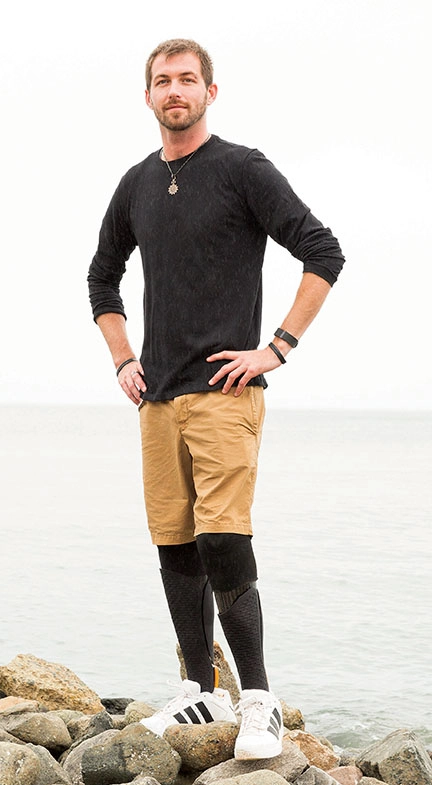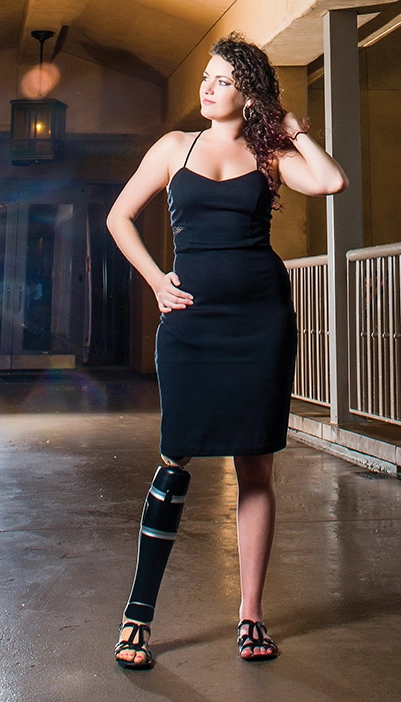Is looking good important to you? Do you fear that your limb loss will always relegate you to “practical” and unfashionable shoes and clothes? Well, don’t give up just yet. With some innovative thinking and adaptations, you should still be able to achieve a personal style that will brighten your life.
Shoes

Even if you are missing one or both arms, you don’t have to wear slip-on shoes every day—you can wear lace-up shoes without depending on someone else to tie them for you. If you replace your regular shoestrings with elastic shoestrings or HICKIES (hickies.com), your shoes will expand and contract so that you can easily slip in and out of them without tying and untying them. If you are missing one arm, you can find shoes that close with zippers or Velcro or learn to tie your shoes with one hand (visit youtube.com/watch?v=SGerCTSHyZQ for a lesson).
Adaptive Clothing
Several companies and designers offer adaptive clothing. They might, for example, replace a seam in a sleeve or pant leg with a zipper or Velcro so that you can open it and put on, take off, or adjust your prosthesis more easily. Or they might use elastic in a waistband so that you don’t have to use a belt. If you use a wheelchair, you may find that you look better and feel more comfortable in clothes made or altered for you.
If you can’t afford specially designed clothing, you might learn to alter your own clothing, contract with a seamstress, or purchase your clothing from companies like Buck and Buck (buckandbuck.com) that will alter them for you. If you want to try making your own alterations, looking through catalogs of adaptive clothing will give you lots of ideas.
Hiding Your Amputation
If you would rather others not notice or focus on your missing limb, you’ll want to avoid cutting off your sleeve or pant leg, letting it hang empty, or pinning it up. Instead, you might want to wear a prosthesis that looks like an anatomical hand or foot. The prosthesis will fill out your sleeve or pant leg and give your hand or foot a more natural appearance.
Including Your Assistive Devices in Your Style
Rather than hiding your disability, you might instead decide to use your prosthesis, cane, wheelchair, or other assistive device as an integral aspect of your style. You might go with a mechanical or bionic look for your prosthesis or have it painted or covered with a fabric or 3D printed design. Companies such as Prosthetic Ink (prostheticink.com), Fred’s Legs (fredslegs.com), UNYQ (unyq.com), and ALLELES Design Studio (alleles.ca) offer cover solutions. You could also choose a stylish cane that fits your personality or deck out your wheelchair like a customized automobile. Being an amputee doesn’t mean that you can’t have your own personal style. How you look is still largely up to you. Be creative!

Adaptive Clothing Resources
- LegaWear Legawear.com
- IZ Adaptive izcollection.com
- Cur8able cur8able.com
- Versa AccessWear facebook.com/versaaccesswear



